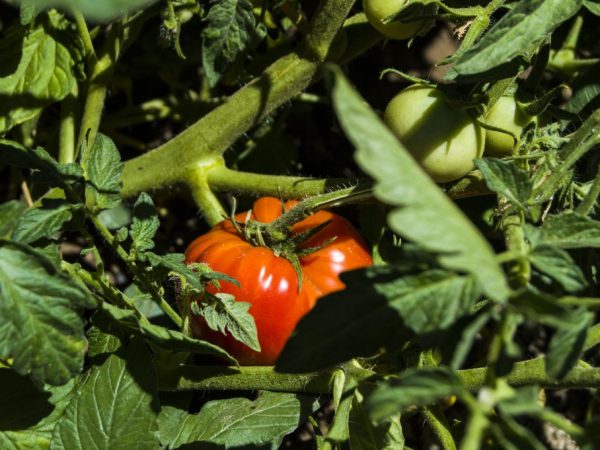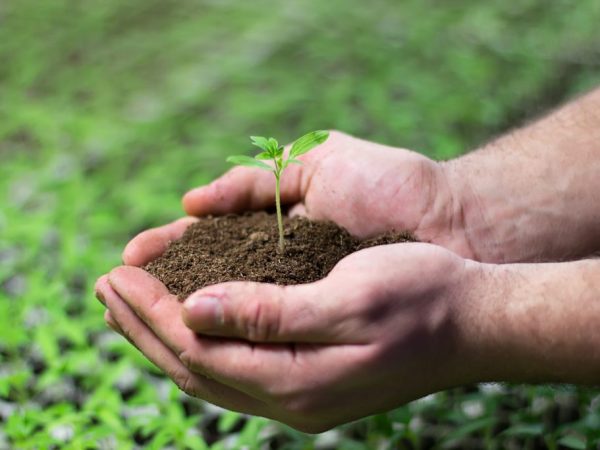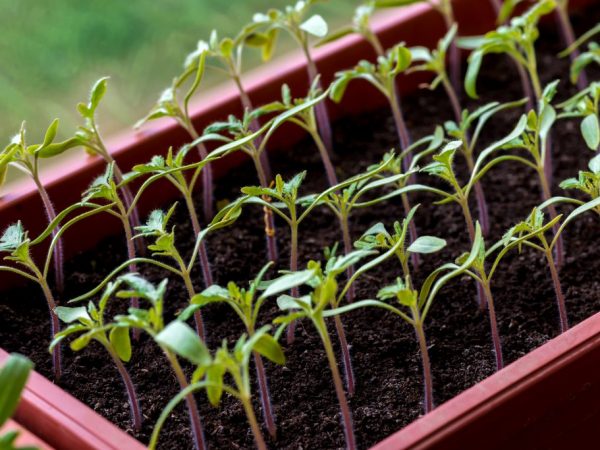Characteristics of Japanese tomatoes
Everyone who has his own, albeit a small plot of land, tries to plant it with high-yielding crops to the maximum. And the choice of these same crops is carried out based on climatic characteristics. Among all the others, the Japanese tomato is especially popular, which has excellent characteristics, thanks to which it is used for a variety of dishes, including spinning for the winter.

Characteristics of Japanese tomatoes
Characteristic
One of the advantages of the "Yaponka" variety is that it is suitable both for residents of the southern strip, where it is planted in the open field, and for vegetable growers in the middle and northern strip, where the tomato is grown in greenhouses or greenhouses. According to experts, this variety has practically no drawbacks, so even a beginner can cope with its cultivation.
Variety descriptions
The Japanese tomato is a hybrid, high-yielding crop that was originally intended only for greenhouse cultivation.
Plants of an indeterminate type, that is, one that has no growth restrictions, so it grows in greenhouses for more than 10 -12 months. A little more than 3 months pass from the moment of planting to the beginning of the harvest, so this variety, like the "Japanese crab", is included in the "mid-season" category.
Description of the bush
The plant grows up to 180 cm in the open field, and in the greenhouse the height of the tomato is slightly higher, on average 2-2.2 m. The bush is moderately spreading, with abundant green mass, the leaves are large with a rich emerald hue. During the growth period, the plant needs a garter to support. The highest yield is obtained after the plant is formed into 1 or 2 stems.
Description of fruits
The characteristics of the fruits will help the gardener make sure that this is a really good and worthwhile variety that needs to be grown, because it can be used for further processing. The Japanese woman tomato plant has the following description:
- The fruits are heart-shaped with a sharp end, slightly ribbed, have a thin but dense skin, which guarantees the safety of the fruit.
- In a state of technical ripeness, they are of a light emerald hue, as soon as the ripening process begins, the tomatoes become a rich raspberry color.
- The fruits of this variety are quite large, weighing on average from 350-500 grams, and on the lower branches the tomatoes are much larger.
- The pulp is fleshy, very juicy, with a pronounced delicate aroma and sweet - sour taste.
- The high content of sucrose and other beneficial trace elements and minerals makes tomatoes very healthy and nutritious.
- Productivity is high, 7-9 tomatoes can ripen in a brush.
This variety is great to use both raw and for appetizers, sauces, soups, juices, mashed potatoes, hot dishes and side dishes. Therefore, you can relate this tomato to the category of "universal". After all, on top of that, canning is also possible, tomatoes are especially good pickled.
Features of growing seedlings

After two months, the seedlings can be planted.
Since this is a medium variety, therefore, the beginning of sowing seeds falls in the first half of March, 60-65 days before the time of the expected planting either in a greenhouse or in open ground. The grower must control the entire process in order to obtain healthy and robust seedlings.
Preparation and planting of seeds
This variety prefers light and nutritious soil, so sod soil should be added to the usual garden soil, as well as organic (humus) and inorganic (ash from wood, superphosphates) additives. Before sowing the seeds, they need to be disinfected; for this, you can use freshly squeezed aloe juice, which will also be an excellent growth stimulant. For planting in the ground, a small deepening is made, the maximum deepening is 2 cm. After planting, the soil is irrigated with warm water and covered with plastic wrap.
Sprout care
For germination to be successful, it is necessary to maintain a stable temperature and good lighting. As soon as young shoots appear, containers with seedlings must be moved to a place where there is a lot of light. If the region is characterized by a greater number of cloudy days, then you need to take care of powerful fluorescent lamps that do a good job with the task. Only under these conditions will culture develop normally and without deviations.
Transplanting
When the first leaves of the plant unfold, they dive into small containers, apply complex fertilizer and watered.
Some, think this moment in advance, the seeds are sown in peat pots. Then the plant does not need a pick, they can be planted in open ground directly in this container, respectively, the roots will be intact. What is really important is to harden the seedlings, for this, two weeks before planting, the sprouts are taken out into the air and left for 20 minutes, after 7 days the procedure is repeated, but the seedlings are already left in the air for the whole day. Landing in the garden is carried out in early May (in greenhouses) or in early summer in the ground. It is recommended to plant 3 or 4 tomatoes per 1 square meter. After planting, the bushes must be tied to a support. The plant needs to be formed into 1 - 2 stems, so the lateral processes are completely removed, then the tomatoes can gain the necessary weight.
Fertilizer
Each hole during planting is processed and fertilized with wood ash or mineral fertilizers. To obtain a rich harvest, it is necessary that the grower additionally fertilizes the seedlings with complex fertilizer. During fruiting, it is better that it consists exclusively of organic components, then this will not affect the taste in any way.
Watering

Water the plants as needed
Vegetable growers of the southern strip should carefully control this moment, since it is these regions that suffer from a lack of rainfall. But at the same time, the bushes should not be poured so that the root system does not start to rot from a large amount of moisture. It is optimal for the growing period to water several times a week. During the fruiting period, this amount increases up to 1 time in 2 days.
Diseases and pests
One of the benefits of the plant is that it is resistant to major diseases. However, the tomato can become infected from other plants, in order to prevent the development of brown or gray rot, which destroy tomatoes and plants, or spider mites, which dries the tomato, certain precautions must be taken.
Prophylaxis
The description says that the vegetable grower does not need to perform any complex manipulations. The most important thing is that the precautions taken are taken on time and clearly according to the rules. The whole process consists of the following points:
- An excellent solution would be when the gardener conducts land turnover. That is, it is not recommended to plant tomatoes in a place where there were previously potatoes, eggplants or peppers.It is good if the predecessors were: carrots, cabbage or legumes.
- If the place of cultivation is a greenhouse, then every season the top layer of the soil is changed, in addition to this, spilling it with a solution of copper sulfate or potassium permanganate (potassium permanganate).
- Greenhouses must be ventilated and weeds must be removed.
- An excellent prophylactic agent will be phytospores and a weak solution of potassium permanganate, they are sprayed with young bushes.
- The fight against insects has been carried out literally from the first days. To do this, the soil must be heated in the oven, the temperature is 60-65 ° C, not lower, only in this way the larvae will be destroyed.
- Once a week, an examination is carried out for the appearance of diseases, if there are any, the plant must be destroyed so that the virus or fungus does not spread to other bushes.
Conclusion
Japanese is a relatively new, but very interesting and versatile variety. Its disease resistance makes it ideal for both experienced and novice vegetable growers. If during the season a rich harvest was harvested, then you can take seeds from your own bushes in order to plant this variety next season, but without additional costs.


